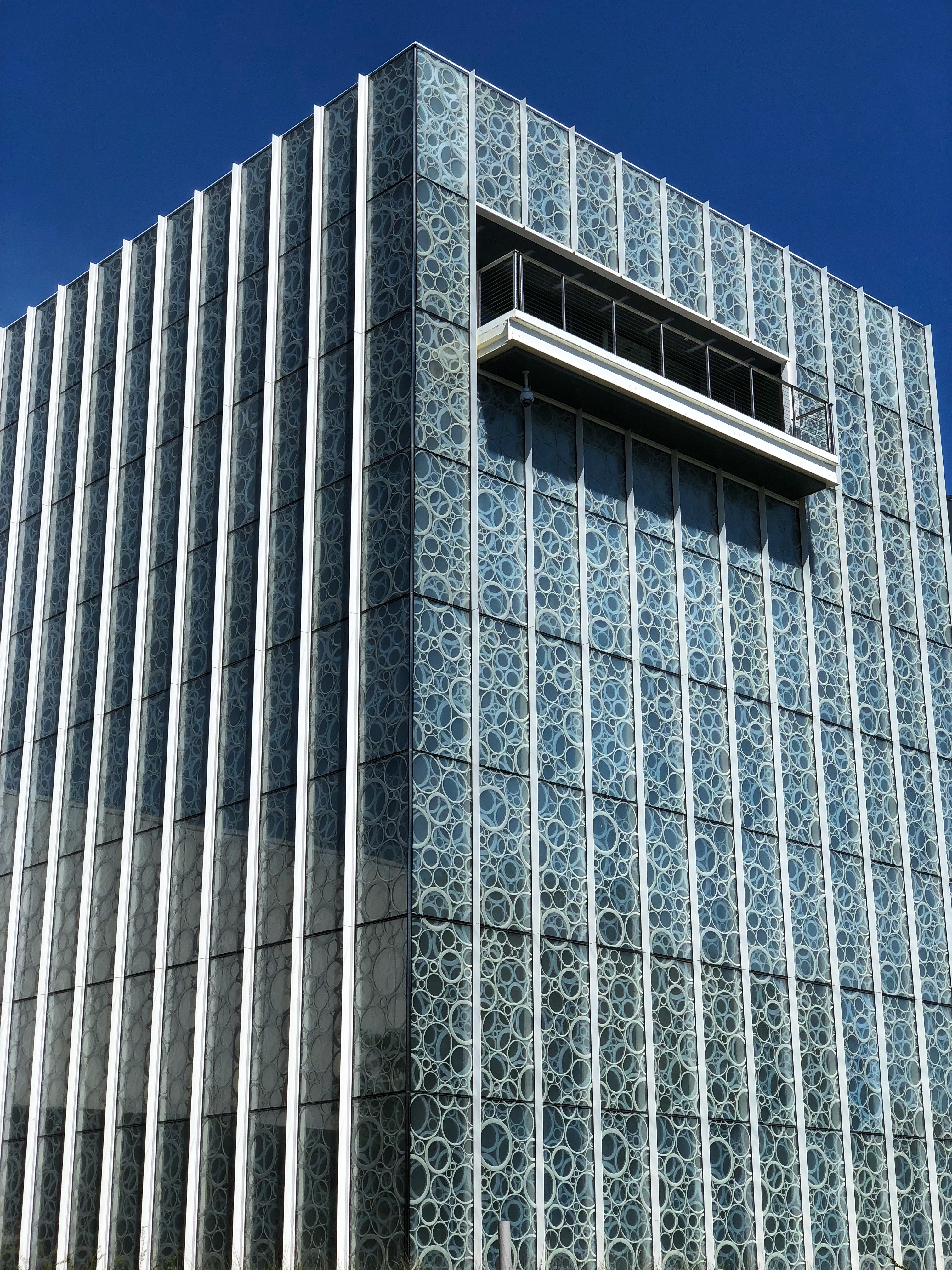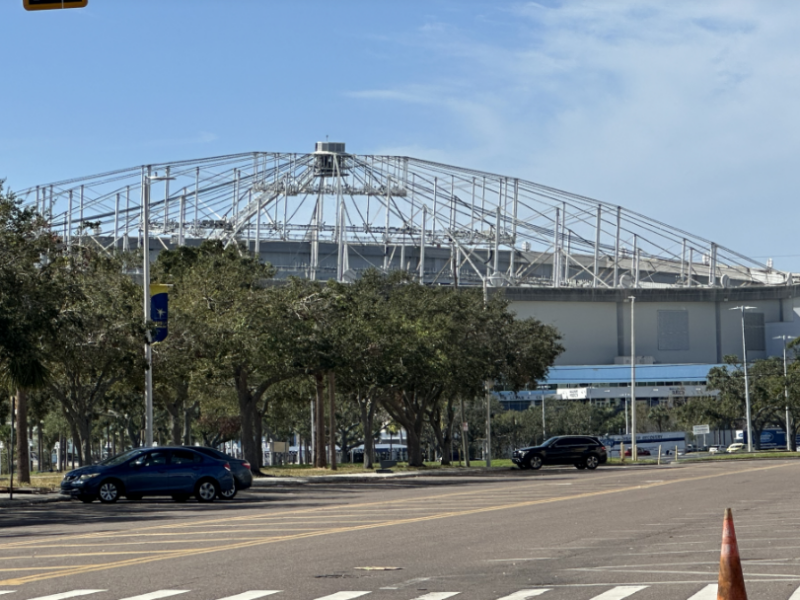Kate Tiedemann gifted $10 million to USF St. Petersburg in 2014. She owned a ophthalmic surgical supply business before retiring to Pinellas county. Martha Rhine | The Crow’s Nest
Their names adorn prominent campus buildings, but the people behind those names are a mystery to many students.
Here’s a quick introduction to some of the important people whose contributions and legacies are honored here.
Kate Tiedemann
When she got off a steamship in New York in 1955, the German immigrant had $30 and spoke no English. Undaunted, she began a climb that became a classic American success story.
She found a job as a maid – to former New York Gov. and presidential candidate Thomas E. Dewey – and then a clerical post at a business that sold surgical instruments. That led eventually to her own ophthalmic surgical supply business, which made her a millionaire many times over.
Tiedemann (pronounced TEE-de-man) retired to Pinellas County, and in 2014 she gave $10 million to USF St. Petersburg – the largest gift in the university’s history. The College of Business is named for her.
Lynn Pippenger
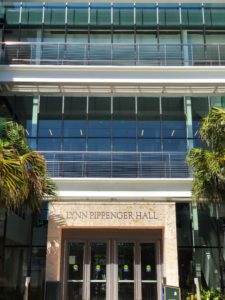
Her name adorns the building for the Kate Tiedemann College of Business, which apparently was the first business school in the United States where both the school and the building that houses it are named after women.
A St. Petersburg native, Pippenger attended both the St. Petersburg and Tampa campuses of USF and eventually earned a master’s in business administration. For years, she worked at Raymond James Financial, rising from payroll clerk to chief financial officer.
She gave $10 million to the business school on the Tampa campus in 2015 and $5 million to USF St. Petersburg in 2016.
C.W. Bill Young
He was a high school dropout, but the longtime member of Congress from Pinellas County steered millions of federal dollars to the university – and many millions more to marine research, MacDill Air Force Base, roads and overpasses, beaches, public health and the Veterans Administration.
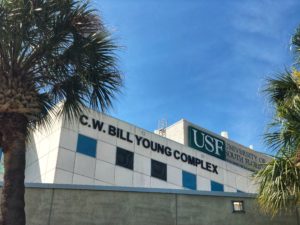
In 2004, the university and city saluted Young by putting his name on the marine science complex along Bayboro Harbor and the Port of St. Petersburg. The complex is a cooperative venture that includes the USF College of Marine Science, the U.S. Geological Survey, the Florida Fish and Wildlife Research Institute, the Tampa Bay Estuary Program, the National Oceanic and Atmospheric Administration, and the Florida Institute of Oceanography.
Early in his political career, however, Young was no friend of USF. As a state legislator in the 1960s he was a member of the notorious Johns Committee, which was established to root out communists in the civil rights movement.
Finding no communists, the committee turned its focus to “perverts” (read: gays) and “commies” (people who favored integration) in public schools and universities. Its shameful witch hunt ruined numerous careers and, according to Florida journalist and historian Martin A. Dyckman, “nearly strangled the University of South Florida at its birth.”
Young died in 2013.
Nelson Poynter
For 40 years, Poynter ran the St. Petersburg Times (now the Tampa Bay Times), which over that time became one of America’s best newspapers.

Poynter was a champion of St. Petersburg and education, and his support of the university reflected those passions.
In the 1950s, he and the paper campaigned – unsuccessfully – to have the new University of South Florida based in Pinellas County instead of Tampa.
Poynter then became a generous contributor to the tiny branch campus on the St. Petersburg waterfront. He died of a stroke on June 15, 1978, just hours after he proudly took part in the groundbreaking for the first major expansion of the campus.
Poynter’s name adorns both the university library and the Poynter Institute, a private, nonprofit school for journalists a block south of the Kate Tiedemann College of Business. The institute owns the Times.
Lowell E. Davis
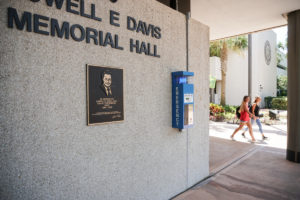
Davis, a biologist and academic administrator, came to St. Petersburg from Syracuse University in 1986 to be dean and chief executive officer of the campus.
It was a heady time, and the popular Davis led efforts to expand the university’s ambition, footprint and curriculum.
The community was stunned when he suffered a stroke and died in 1989 at the age of 58. One of the main classrooms and administration buildings is named for him.
Peter Rudy Wallace
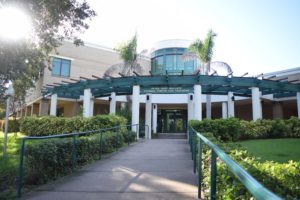
The scion of a politically prominent St. Petersburg family, the genial lawyer was elected to the Florida House of Representatives at the age of 28. He served there from 1982 to 1996, the last two years as House speaker.
He helped secure funding for the Florida Center for Teachers, which opened in 2001.
Nine years later, the building was renamed the Peter Rudy Wallace Florida Center for Teachers. It houses the Department of Journalism and Digital Communication and the Florida Humanities Council.
John C. Williams and C. Perry Snell
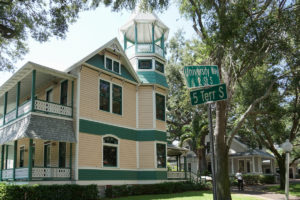
The names of these stalwarts of early St. Petersburg are on side-by-side houses on Second Street S (University Way).
Williams was a co-founder of the city and built his Queen Anne-style home in 1891, a year before his death. The house later became a hotel.
Snell, who died in 1942, was a civic leader and developer in the first decades of the 1900s. The upscale Snell Isle neighborhood in northeast St. Petersburg bears his name. He built his Dutch colonial revival-style house in 1904.

The two historic houses were moved – very carefully – to USF St. Petersburg in the 1990s. The Williams House is home to the university marketing and communications staff and a venue for student and faculty gatherings. The university honors program and Florida studies program are headquartered in the Snell House.
Compiled from a column by Robert Trigaux and other stories in the Tampa Bay Times; websites of USF St. Petersburg and the city of St. Petersburg; and the work of Pinellas County historian James Anthony Schnur.

